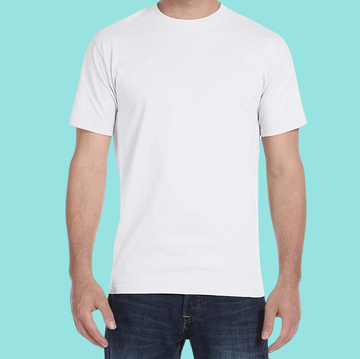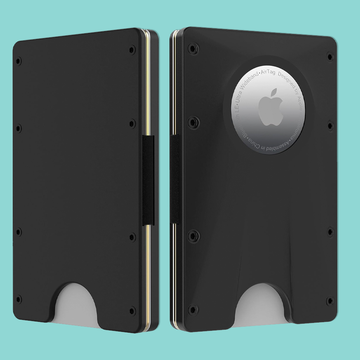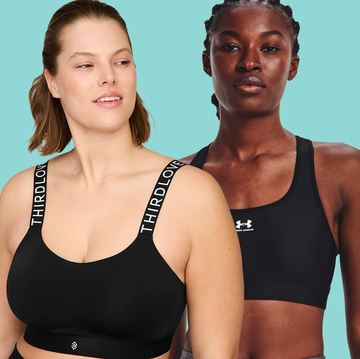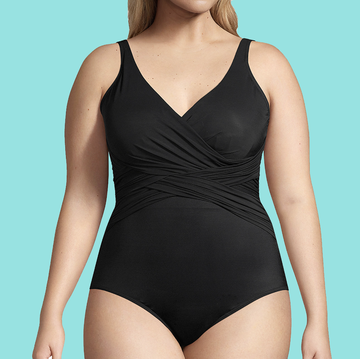A few weeks ago it happened again: I bought a really cute top and was looking forward to wearing it to work, but within minutes of putting it on, I felt like I was being stabbed in the neck by a million tiny — yet incredibly sharp — cactus needles. Since I was already running late, I didn’t have the time, or patience, to sit under a reading lamp with a tiny pair of scissors carefully undoing the microscopic stitches holding the sandpaper-like tag to the neckline of my shirt. Instead, I yanked it out, leaving two small but very noticeable holes in the fabric
So once again, I showed up at work looking like a vampire had sunk his fangs into the back of my lovely new sweater. But hey, it was better than twisting into a pretzel all day trying to scratch that itch that’s always right in the spot where you can’t possibly get at it.
As I thought of all the times over the years that I’ve suffered from the dreaded curse of itchy labels, I did what any self-respecting Gen Xer does when she wants to rage at the universe and feel a little less alone in the world. I posted on Facebook: “Am I the only ADULT who is constantly tormented by itchy labels in sweaters and shirts?”
Given how my Facebook page blew up, I quickly realized I am not.
Friends from all over the country jumped in to sympathize. John, a political campaign strategist in Washington, DC, said, “For exercise clothes in particular, I now deliberately get just shirts with the printed-on tag. I had one shirt in particular with an itchy tag as long as CVS receipt and it drove me crazy.” Rachel, a drama teacher in Houston, commented: “At this moment, I am on my way to work, thinking about how I will grab scissors and cut out the tag in my sweater as soon as I arrive.” Hillary, who works in education in Boston, complained: “I just bought a new top and had to take it off 3x to do more tag modifications. Still itching me.”
The universal loathing and despair over itchy labels made me think, if we’re all walking around with scratch marks on our necks and holes in our shirts, why has no one found a way to solve this problem? They can make a hamburger out of peas and cars are now driving themselves, but no one has figured out how to create a non-itchy tag? In the name of all my comrades in itchiness, I decided to investigate.
To find out why every piece of clothing I buy needs to have a tormenting label — and why the labels are sewn in so tightly that it practically requires a blowtorch to remove them — I decided to call someone who knows the clothing business inside and out. I rang up Charles Cao, president of Crossland Associate, Inc, who has been in women’s clothing manufacturing for 25 years and knows his way around a label. Cao sympathized with my plight (and mentioned that his wife often cuts out labels as well), but, alas, he said, it’s the law. “It’s U.S. trade regulation that you have to identify yourself with a brand name on the label, and by law it has to be permanently sewn on and can’t be easily removed.” (Italics here to express my outrage!)
Sure, I’m all in favor of protecting consumers by providing as much info about the product as possible, but does it literally have to be a pain in the neck? I read through the Federal Trade Commission’s regulations for clothing labeling (which were as scintillating a bedtime read as you might expect), and came across this detail: “When a garment has a neck, you must attach a label that discloses the country of origin on its front to the inside center of the neck. Attach the label either midway between the shoulder seams or close to another label attached to the inside center of the neck.”
The regulations also solved the mystery of why there are usually two tags at the neckline, the larger label with the clothing company’s name, and a smaller one with the size and info about where that T-shirt or cropped sweater was born. “Textile labels must identify fiber content, country of origin and either the company name or the Registered Identification Number (RN) of the manufacturer.” I grabbed one of the few sweaters I haven’t torn the tag out of and noticed that, indeed, next to the size, it says in tiny letters, “Made in China.”
Then, of course, there are all the fabric and care instructions, which tell the percentage of silk, rayon, cotton, polyester, and other fibers in the material, plus how to wash or dry clean it. And if that merino sweater or Star Wars sweatshirt is sold in other countries, the manufacturer needs to present all that info in several languages. Wisely, the FTC allows manufacturers to put the care label elsewhere on the garment (it’s usually on a side seam), otherwise you might have a tag as long as a jumbo roll of toilet paper running down your back.
Fair enough, but why are they so damn itchy? Cao points out that the label is usually sewn on at the very last stage of production, so it may be done quickly, using a different type of thread than what’s used to hold together the rest of the garment. The labels themselves can be made with any type of fabric, and the name can either be printed on it, or sewn on with threads of a contrasting color. “The most comfortable material is cotton twill with print on it,” he says. “But sometimes companies like to make the label look fancier with raised or shiny letters or a sparkly fabric.”
But whatever fabric and thread is used, there is almost inevitably a sharp edge somewhere, which persistently rubs against your skin. Which leads to the next question: isn’t there a better way?
Why yes, there is a way to get rid of those pesky labels once and for all. “Manufacturers want people to feel comfortable,” says Cao. “And now there is advanced technology that allows the company to print the label right on the garment — 5 or 10 years ago you wouldn’t have seen that.” Right now, says Cao, printed-on labels are usually used on garments that fit snug to the skin, like sports bras, T-shirts, and underwear, but he says there’s no reason it can’t be eventually used on every type of fabric and clothing, and the cost is about the same.
I'm crossing my fingers for a label-less future, but in the meantime what can we do to keep from being driven mad by itchy tags? My original Facebook post turned into a lively debate about which method of tag removal was the best. Tiny scissors and seam rippers were mentioned, and Paula, a high school friend who owns a gift-basket company in Plainview, NY, pointed me in the direction of Scotch Essential Tag Comfort Covers (I had been improvising my own version of these for years, always throwing a few large Band-Aids in my purse for itchy-tag emergencies). Meanwhile, I have started googling “Adult sensory clothing” and have found links to several brands that pay close attention to not only the labels and tags, but how the fabrics and seams feel on sensitive skin.
So while I load up on tag covers and check out which brands print their labels on rather than sew them, I will eagerly await a future in which a piece of clothing softly nuzzles my neck rather than scratching at it like an angry kitten.

Marisa Cohen is an editor in the Hearst Lifestyle Group’s Health Newsroom, who has covered health, nutrition, parenting and culture for dozens of magazines and websites over the past two decades.

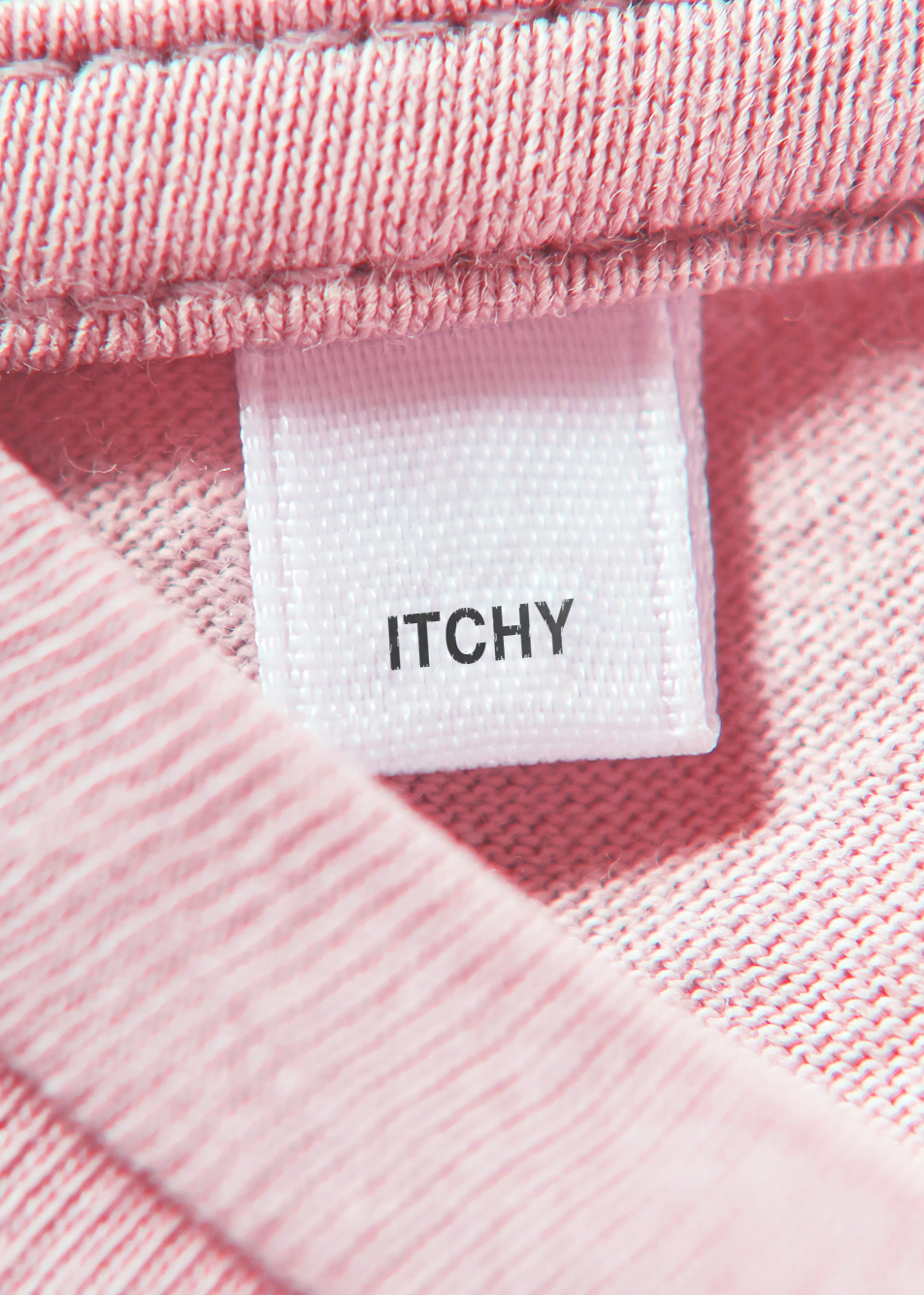
![[image id='e77fd6c1-b82f-4dcd-a06c-83d250213ab3' mediaId='baa180c0-7a69-40ad-a5c2-62e359d38b79' align='left' size='large' share='false' caption='' expand='' crop='original'][/image] [image id='e77fd6c1-b82f-4dcd-a06c-83d250213ab3' mediaId='baa180c0-7a69-40ad-a5c2-62e359d38b79' align='left' size='large' share='false' caption='' expand='' crop='original'][/image]](https://hips.hearstapps.com/hmg-prod/images/gh-itchy-tags-inset-2-1577990639.png?resize=980:*)


